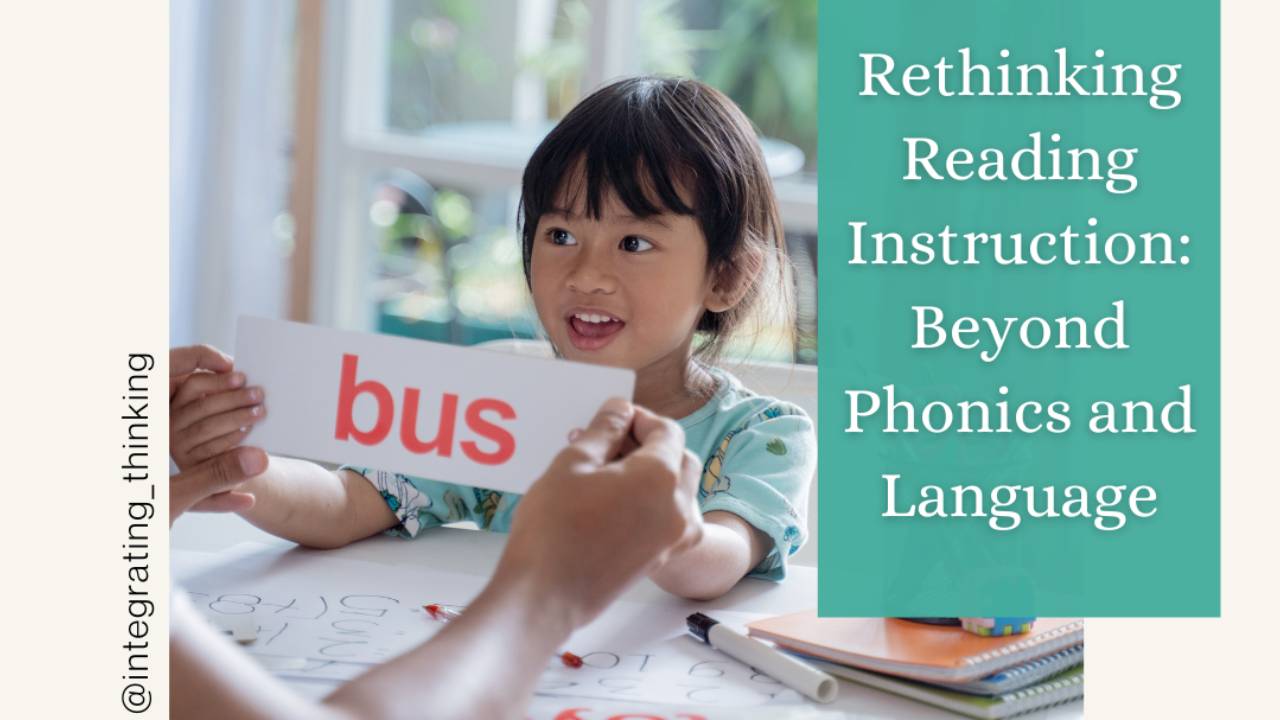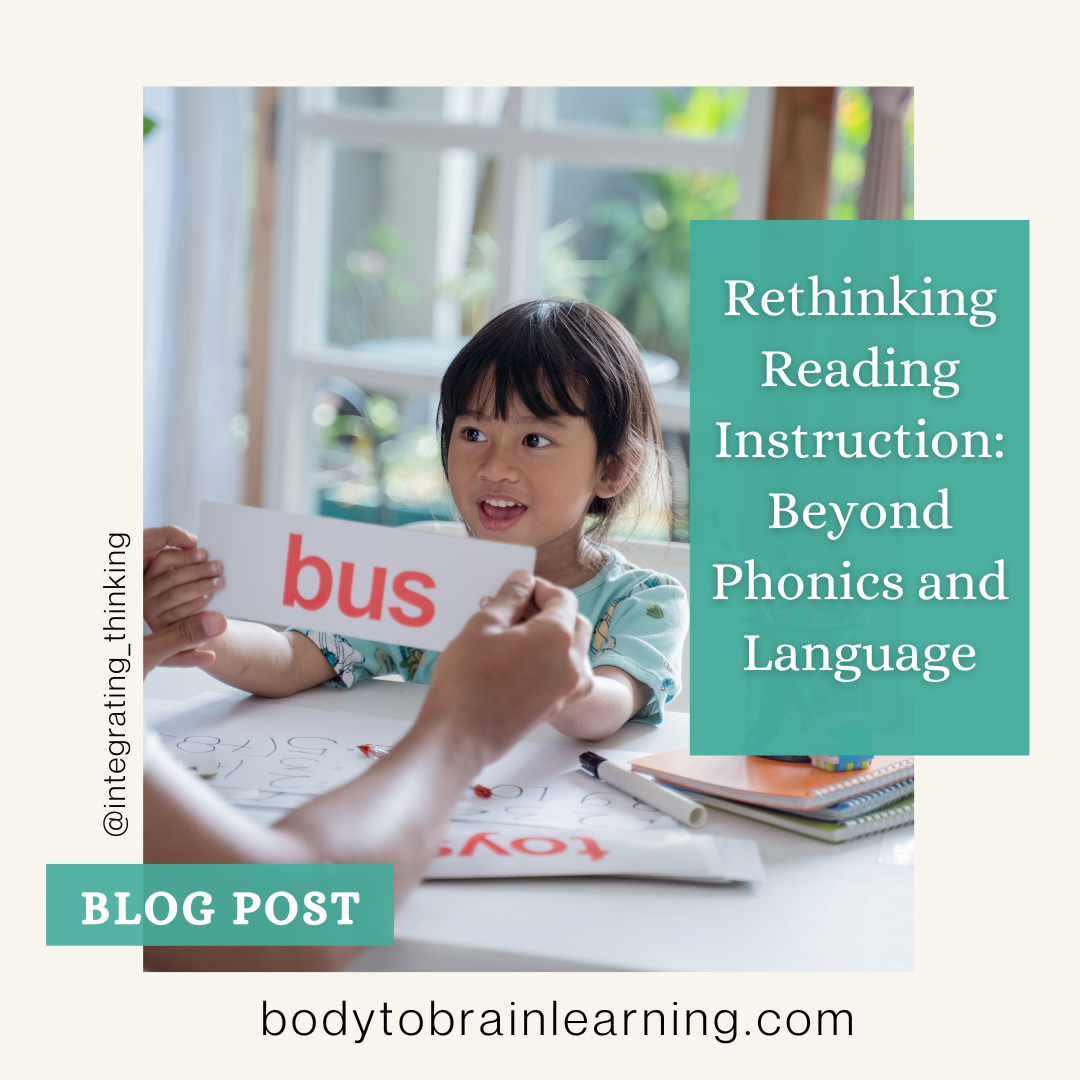Rethinking Reading Instruction: Beyond Phonics and Language
Sep 16, 2023
 In the world of education, there's an abundance of programs designed to support the teaching of reading. Knowing what to use and which programme is best is a confusing and challenging process.
In the world of education, there's an abundance of programs designed to support the teaching of reading. Knowing what to use and which programme is best is a confusing and challenging process.
Having recently explored around 10 to 12 commercial literacy and “learn to read” programs in some detail, it's clear that there are some impressive options available for teachers to choose from. They all seem to recognise that reading is a multifaceted skill, it requires a multitude of cognitive connections to develop fully over time, and often specific support is required to help students learn to read.
With a background in literacy education, I've always been aware of the significance of language-based experiences and the intricate connections between sounds and letters. It's these connections that pave the way for children to decode words and extract meaning from them. We start with the spoken word, nurturing our oral language skills through human interaction before we embark on the journey of understanding that we can convey thoughts silently through the use of mysterious "squiggles" on a page. We call those “squiggles” print and writing. Interpreting them is reading. This is language transformed into a visual form.
Yet, I found myself pondering the predominant emphasis on phonics, spoken language, and sound-based teaching methods in the reading development and reading instruction programmes I reviewed.
While I don't underestimate their value, I couldn't help but wonder about the assumptions these approaches make about vision and hearing. I am concerned with the gap I identified.
A friend of mine, who happens to be an optometrist, often poses a thought-provoking question: "Try reading this with your eyes closed. How does that work for you? It's challenging, isn't it?" We need good vision to read.
Most of the current reading instruction materials teachers have available to them assume that children inherently possess well-developed visual skills and can effortlessly differentiate between visual information, connecting it with the sounds they hear and the language they speak. These materials take for granted that children inherently grasp concepts like spatial orientation, sequencing and the distinction between similar visual symbols, such as "b" and "d," which essentially share the same shapes and squiggles – a circle and a line. Both are often described in the teaching of writing as a "ball and a stick." Discerning the fine details that make a "b" different from a "d" and different from a “q” or a “p” demands well-developed visual perceptual skills and clear vision. It’s not just about the ball and the stick, it’s about where the stick sits in relation to the ball.
So, what's the point I'm driving at here? I believe it's essential to recognize that, while we have commendable models for teaching reading, our current emphasis on language, phonics, and the well-known "5 or 6 pillars of reading" should be complemented by an understanding of the physiological and neurodevelopmental aspects behind the reading process, including the role of vision.
Reading is fundamentally a visual activity; it begins as a visual stimulus, with brain activity first recorded in the occipital lobe, in the visual cortex. Subsequently, it involves the language centres of the brain. As we learn to read, we learn that distinct symbols (letters and letter combinations) form visual cues that represent "sounds," and units of meaning and communication. Learning to read is like orchestrating a symphony or choreographing a synchronized dance between our visual and auditory language systems.
In the words of an expert in the field, (whose name escapes me right now, sorry!) "Reading is connecting an interface between vision and the spoken language system."
It's time to acknowledge the visual dimension of reading when we consider the teaching of reading and appreciate that sometimes our visual perception, discrimination abilities, and processing of visual cues may not be fully mature or optimally functioning. When this happens, reading becomes a formidable challenge. We need to consider the anatomical and physiological aspects of reading because reading isn't a purely cerebral activity that occurs in one part of our brain. It involves our body and stimulates various brain regions, ultimately allowing us to derive meaning from the seemingly random marks on a page. These body and brain components need to work well together for us to learn to read and become fluent readers, print consumers and, ultimately, producers of text. It’s highly complex.
So, what's missing from the "How to teach reading literature?" The acknowledgement of the body and sensory elements that contribute to the reading experience and how they work together to support reading.
If a child has poor stationary balance issues (an immature vestibular system), their visual gaze and auditory processing can be impaired. If a child’s eyes don’t team and work well together, letters and words can be blurry, move around, slope in different directions, have shadows and appear to be doubled up. If a child has always seen the world in this way, they are unlikely to talk about these challenges. Instead, they assume that everyone sees the text as they do, and they start to question their own ability and intelligence. This is often the case when a child without visual difficulties is beside them and finds the ‘learning to read process’ easy. Using a phonics approach isn’t enough for understanding and helping children learn to read. Teachers also need to learn how to observe students to determine if the visual aspects of reading are supporting or detracting from their learning process. That requires awareness of how students use their bodies to learn and skills to recognise visual and motor control difficulties that could be negatively impacting a child’s capacity to read. Teachers need to learn to read, understand and support the body language of learning. Learning to read relies on more than the auditory perception and processing system. It also relies on good vision, vestibular maturity and postural security. Without these in place, the task of learning to read can be extremely challenging, not just for children, but also for adults who struggle with reading.
My goal is to help educators gain a deeper understanding of the body-based aspects of learning so that they can enhance their students' learning performance. We need to bridge the knowledge gap for teachers, recognizing that reading isn't solely a cognitive, cerebral and auditory-based endeavour, but rather a holistic, multisensory process that involves our body and our brain.
In essence, let's explore the uncharted territories of reading instruction, where vision, postural security and auditory experiences converge with language and the printed representation of language. We want to create well-rounded readers who can not only decode words and meaning but truly experience and enjoy the magic of reading without “fighting their bodies”, which is how some of my clients describe their reading experiences.
If you want to learn more about the INPP method: exploring how the body tells us the learning story and learning experiences of the children and adults with whom we work, check out our “Body to Brain Learning” website, our Integrating Thinking website or the INPPAustralia website.
Bodytobrainlearning.com ; integratingthinking.com.au or inppaustralia.com.au
Understanding and applying the Body to Brain Learning™ process helps students and teachers attain better academic learning outcomes. It's a neurodevelopmental approach that impacts the well-being of students and teachers at school and can help support neurodivergent students and those who work with them. It also assists those who are underachieving academically and are experiencing learning challenges because of neuromotor and sensory immaturity.
LEARN MORE and STAY INFORMED
If you would like to learn more about the Body to Brain Learning™ process and join in the conversation, then sign up for regular updates, training information and other 'neuro-nerd' learning discussions using the button in the section below.
You can also follow us on Facebook, Instagram and Linked In. Please join in the conversation there. Body to Brain Learning™ is part of Integrating Thinking Neurodevelopmental Education Consultancy.
Dr Christine Payard (PhD) is a Neurodevelopmental Educator, founder of the "Body to Brain Learning™ Professional Development Series", Director of "Integrating Thinking" and the INPP Australia Principal.
She is an experienced teacher, presenter, educational researcher and passionate educator who could talk all day about learning, how we learn, the body, the brain, and a functional and developmental approach to learning.
Learn more:
www.bodytobrainlearning.com www.integratingthinking.com.au www.inppaustralia.com.au
Stay connected with news and updates!
Join our "Integrating Thinking" and "Body to Brain Learning" mailing list to receive the latest news, updates & training information from us.
Don't worry, your information will not be shared with others.
We HATE spam, so you won't be inundated with emails from us.


